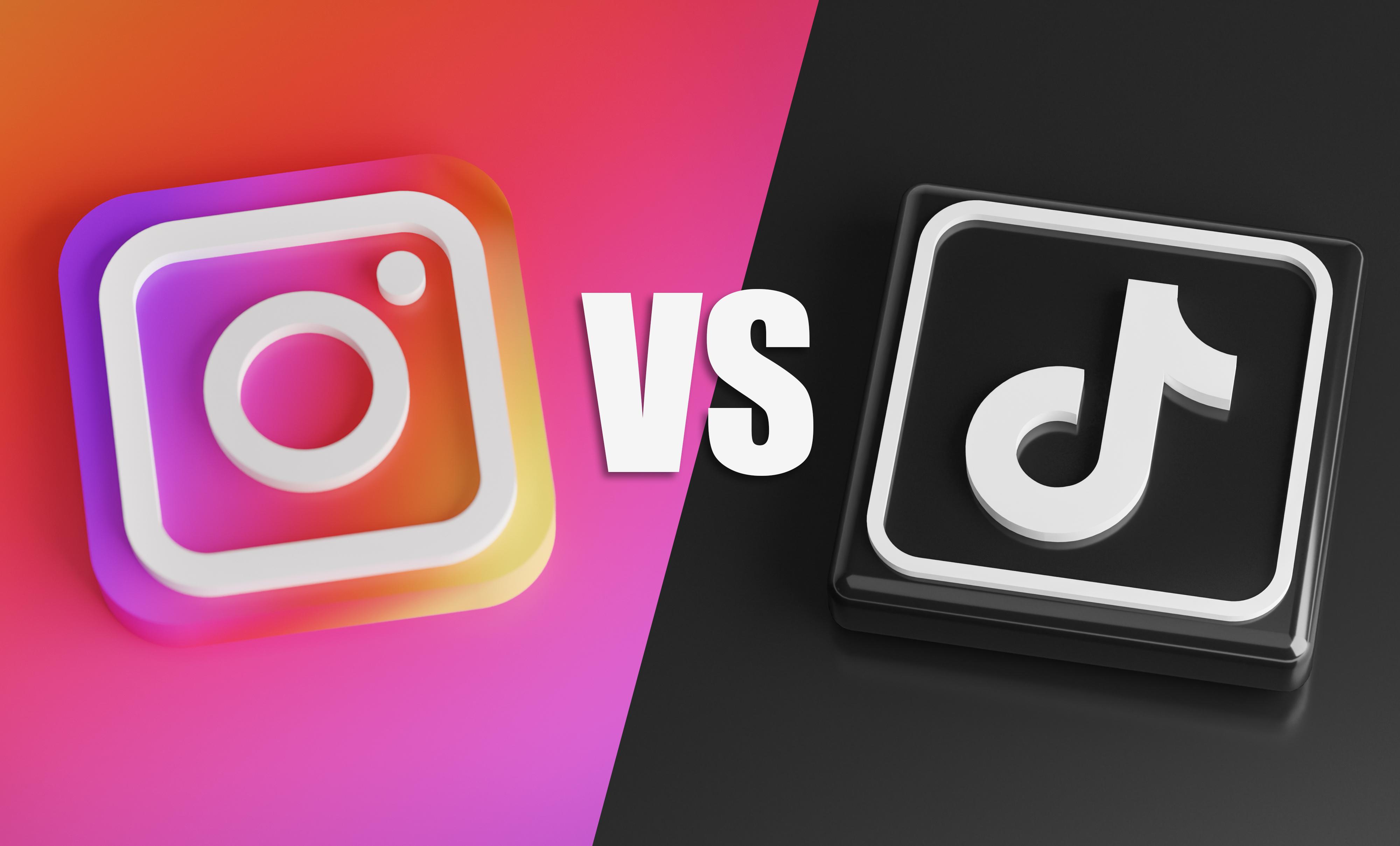Instagram vs. TikTok: Which Platform Should Your Brand Prioritize?

In today’s fast-paced digital world, social media has become the heartbeat of brand visibility and customer engagement. With billions of active users scrolling, liking, and sharing content every day, platforms like Instagram and TikTok are at the center of modern marketing strategies. But as a business owner or marketer, a big question often arises: Which platform should my brand prioritize—Instagram or TikTok?
Both platforms have immense potential, but they serve different audiences, offer unique content formats, and provide distinct opportunities for growth. In this blog, we’ll dive deep into the differences between Instagram and TikTok, explore their strengths, and help you decide which one is best suited for your brand.
Understanding Instagram: The Veteran Platform
Launched in 2010, Instagram has evolved from a simple photo-sharing app into one of the world’s most powerful digital marketing tools. Owned by Meta (formerly Facebook), it now offers a wide variety of features, including:
-
Feed posts (photos, carousels, and videos)
-
Stories (24-hour disappearing content)
-
Reels (short-form videos competing directly with TikTok)
-
IGTV and live streaming
-
Shopping integration for direct e-commerce
With over 2 billion monthly active users worldwide, Instagram is not only a place to showcase products and services but also a platform to build long-term brand identity.
Understanding TikTok: The Disruptor
TikTok, launched internationally in 2018, has become the fastest-growing social media platform in history. With over 1.5 billion monthly active users, it thrives on short-form, highly engaging, and often entertaining video content.
Key features of TikTok include:
-
For You Page (FYP): Personalized content feed powered by a highly advanced algorithm.
-
Short-form videos (15–60 seconds, now up to 10 minutes in some cases).
-
Duets and Stitches: Interactive tools that allow users to remix and engage with other creators’ content.
-
Music and sound integration: Making videos trend-driven and viral-friendly.
TikTok’s biggest strength is its algorithm. Unlike Instagram, which favors established accounts and audiences, TikTok gives even new users a chance to go viral overnight.
Audience Demographics: Who’s Watching?
When choosing between Instagram and TikTok, understanding your audience is key.
Instagram Demographics
-
Age: Popular among 18–34-year-olds, though usage spans across nearly all age groups.
-
Gender: Fairly balanced between male and female users.
-
Purpose: People use Instagram for lifestyle inspiration, shopping, networking, and following brands they already know.
TikTok Demographics
-
Age: Dominated by Gen Z (16–24 years old), though Millennial adoption is increasing rapidly.
-
Gender: Slightly more female-dominated.
-
Purpose: Users come to TikTok for entertainment, discovery, trends, and authentic content.
👉 If your brand targets younger, trend-driven consumers, TikTok is your best bet. If you’re targeting a broader or slightly older audience, Instagram remains powerful.
Content Style: Polished vs. Authentic
One of the biggest differences between Instagram and TikTok lies in the type of content that resonates.
-
Instagram Content: Aesthetic, curated, polished. Brands often post high-quality images, professional videos, and carefully designed Stories. Think of Instagram as the “digital magazine” of your brand.
-
TikTok Content: Authentic, raw, entertaining. Creativity matters more than perfection. TikTok thrives on humor, storytelling, challenges, and relatability. Think of TikTok as your brand’s “digital reality show.”
👉 If your brand identity is luxury, premium, or design-focused, Instagram may suit you better. But if your brand thrives on fun, interactive, and viral potential, TikTok is the way to go.
Advertising Opportunities
Both Instagram and TikTok offer robust advertising tools, but their approaches differ.
Instagram Ads
-
Ad Types: Feed ads, Stories ads, Reels ads, carousel ads, shopping ads.
-
Targeting: Advanced targeting thanks to Meta’s data ecosystem.
-
Strength: Perfect for e-commerce brands that want measurable ROI.
TikTok Ads
-
Ad Types: In-feed ads, Top View ads (shown when the app opens), branded challenges, branded effects.
-
Targeting: Improving, but not as advanced as Instagram.
-
Strength: Highly engaging, creative ad formats that feel less like ads and more like native content.
👉 If your focus is conversion and e-commerce, Instagram ads are hard to beat. If you want brand awareness and viral engagement, TikTok ads may perform better.
Algorithm and Reach
Here’s where TikTok shines.
-
TikTok’s Algorithm: Levels the playing field by pushing content to users based on interests, not just followers. This means small brands can go viral quickly.
-
Instagram’s Algorithm: Rewards consistency, established followings, and high engagement. Growth can be slower, especially for new accounts.
👉 If your brand is new and wants fast exposure, TikTok’s algorithm is your friend. If you already have a strong following, Instagram helps deepen connections.
Cost Considerations
Another factor is budget.
-
Instagram Marketing Costs: Ads are more competitive, often more expensive per click or impression. Content production costs can also be higher due to the need for professional visuals.
-
TikTok Marketing Costs: Ads may be less expensive for now, but content creation is constant since trends change quickly. You’ll need to post frequently and creatively.
👉 If your brand has limited ad spend but lots of creative flexibility, TikTok may be more cost-effective. For brands with larger budgets aiming for conversions, Instagram provides better ROI.
Case Studies: Who’s Winning Where?
-
Fashion and Beauty Brands (e.g., Dior, Sephora): Use Instagram for polished campaigns and e-commerce integration, but rely on TikTok for viral challenges and influencer collaborations.
-
Food and Beverage Brands (e.g., Starbucks, Chipotle): Perform exceptionally well on TikTok thanks to interactive content like recipe hacks and customer challenges.
-
Luxury Brands (e.g., Louis Vuitton, Rolex): Prefer Instagram to maintain a premium, curated image.
-
Startups and Small Businesses: Often find TikTok to be a game-changer due to its viral potential without huge budgets.
Should You Choose One—or Both?
The reality is, you don’t have to choose only one platform. Many successful brands use both, but with different strategies:
-
Use Instagram to build credibility, showcase products, and nurture long-term relationships.
-
Use TikTok to reach new audiences, test creative content, and generate buzz.
👉 The key is to prioritize the platform that aligns most with your goals. For example:
-
Goal = Brand awareness → TikTok should be the focus.
-
Goal = Sales conversions → Instagram should be the focus.
Quick Comparison Table
| Feature | TikTok | |
|---|---|---|
| Audience | Broader, slightly older | Younger, Gen Z-focused |
| Content Style | Polished, aesthetic | Authentic, entertaining |
| Advertising | Advanced targeting, conversion-driven | Creative, engaging, viral potential |
| Algorithm | Rewards established accounts | Boosts new creators |
| Cost | Higher CPC, polished content needed | Lower CPC, frequent content needed |
| Best For | E-commerce, luxury, lifestyle | Awareness, viral growth, trends |
Conclusion: Which Platform Should Your Brand Prioritize?
The decision between Instagram vs. TikTok depends on your brand’s goals, audience, and resources.
-
If your brand values a polished look, e-commerce sales, and slightly older demographics, Instagram is your go-to platform.
-
If your brand wants viral potential, younger audiences, and authentic engagement, TikTok should be your focus.
-
For maximum impact, a hybrid strategy—using Instagram for brand credibility and TikTok for discovery—often delivers the best results.
At the end of the day, both Instagram and TikTok are powerful tools. What matters most is not the platform itself, but how well you understand your audience and deliver content that resonates.







